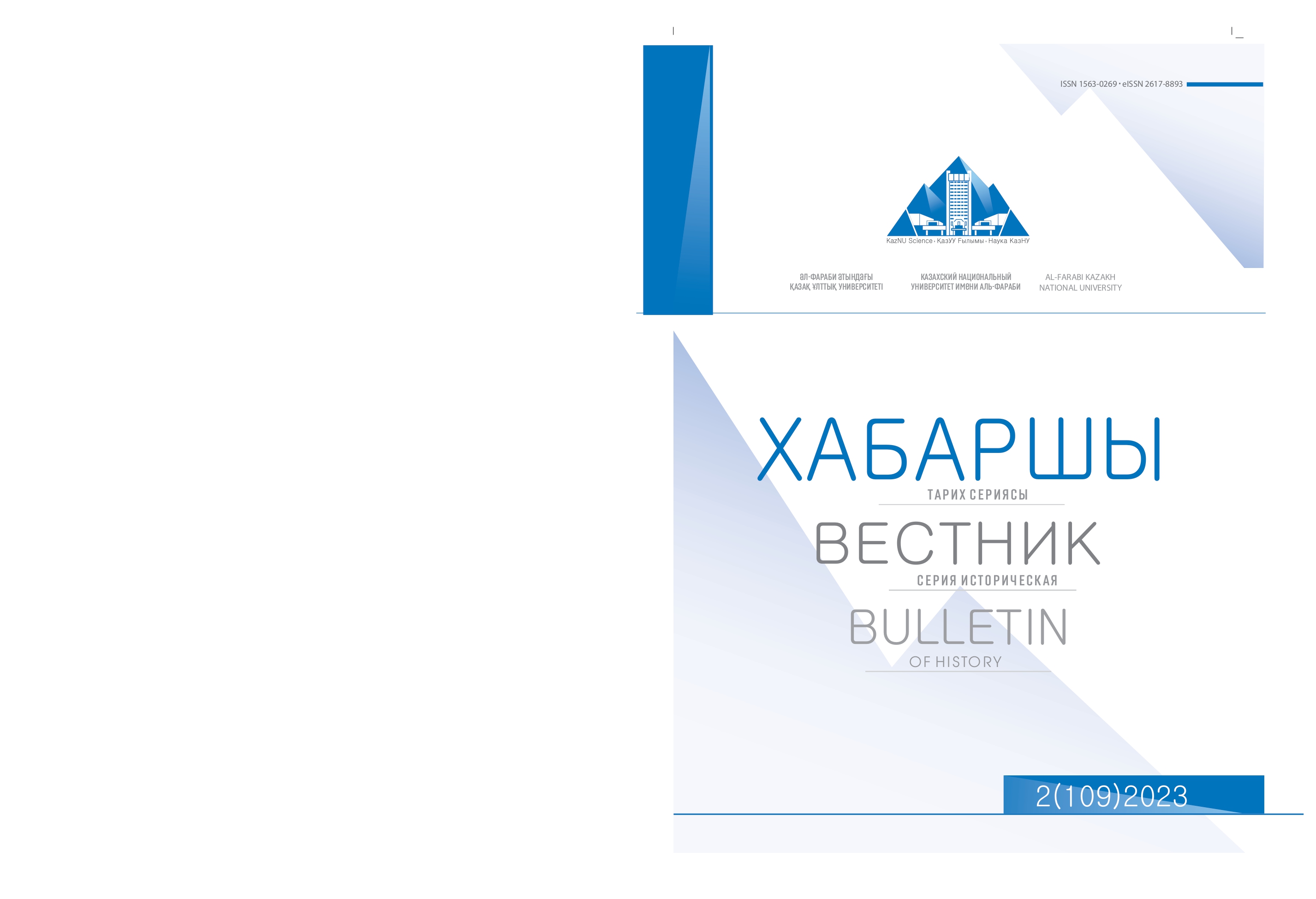Forms of public organization of Muslims in Siberia at the beginning of the XX century.
DOI:
https://doi.org/10.26577/JH.2023.v109.i2.06Abstract
The purpose of this article is to study the forms of public organization of Muslims in Siberia at the beginning of the XX century. At that time, the religious Muslim communities of Siberia within its modern borders were part of the Orenburg Mohammedan Spiritual Assembly (OMDS, Makhkama-i-shargya), which also served the parishes of the Akmola region and a number of cities in the territory of modern Kazakhstan.
The article is based on the use of comparative-historical, typological, problem-chronological methods, the method of synchronous analysis, periodization, classification, and others.
As a result of the work, we found out that after the revolution of 1905-07, a developed Muslim infrastructure was created in Siberia. It included charitable societies, libraries, in 1912-13 the first Moslem newspaper of the region, the Tatar-language “Siberia”, was published in Tomsk. Representatives of Siberian Muslims participated in the All - Russian Muslim Congresses of 1906 and 1914, and especially in 1917. In the second half of 1900 - early 1910s, we see the creation of Jadid maktabs in Siberia and the Far East. The creation of “Society of Muslim students” in Tomsk in 1915 was an important event. After the February Revolution of 1917, Muslim Committees and Bureaus were formed in a number of Siberian cities, provincial congresses of Muslims and even a Siberian Muslim congress were held.
At the First All-Russian Muslim Congress in May 1917, representatives of the Kazakhs advocated the entry of their people into the Spiritual Assembly (Makhkama-i-shargya) with the center in Ufa, which from July 1917 became known as the Diniya Nazaraty (Religious Department) of Milli Idare (The national government). In March 1917, two of the three qadis of the OMDS were previously imams in Siberia, and since May 1917, a qadi was added to them who, directly represented the Kazakhs.
The scientific value of the study is that it shows that the forms of social organization of Muslims in Siberia generally corresponded to similar forms in European Russia, especially among the Tatars of the Volga-Ural region. In Siberia at the beginning of the last century, we see the interaction of Tatars and Kazakhs within the framework of the all-Russian Muslim social movement and a single religious body.
Keywords: Siberia, Tatars, Kazakhs, Muslim charitable societies.




